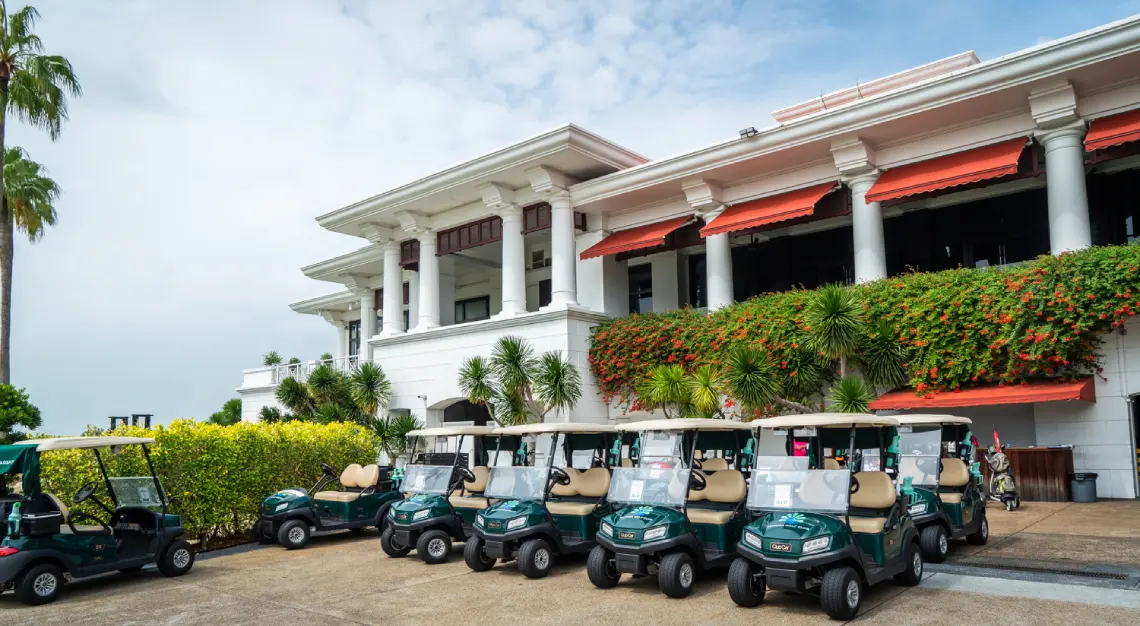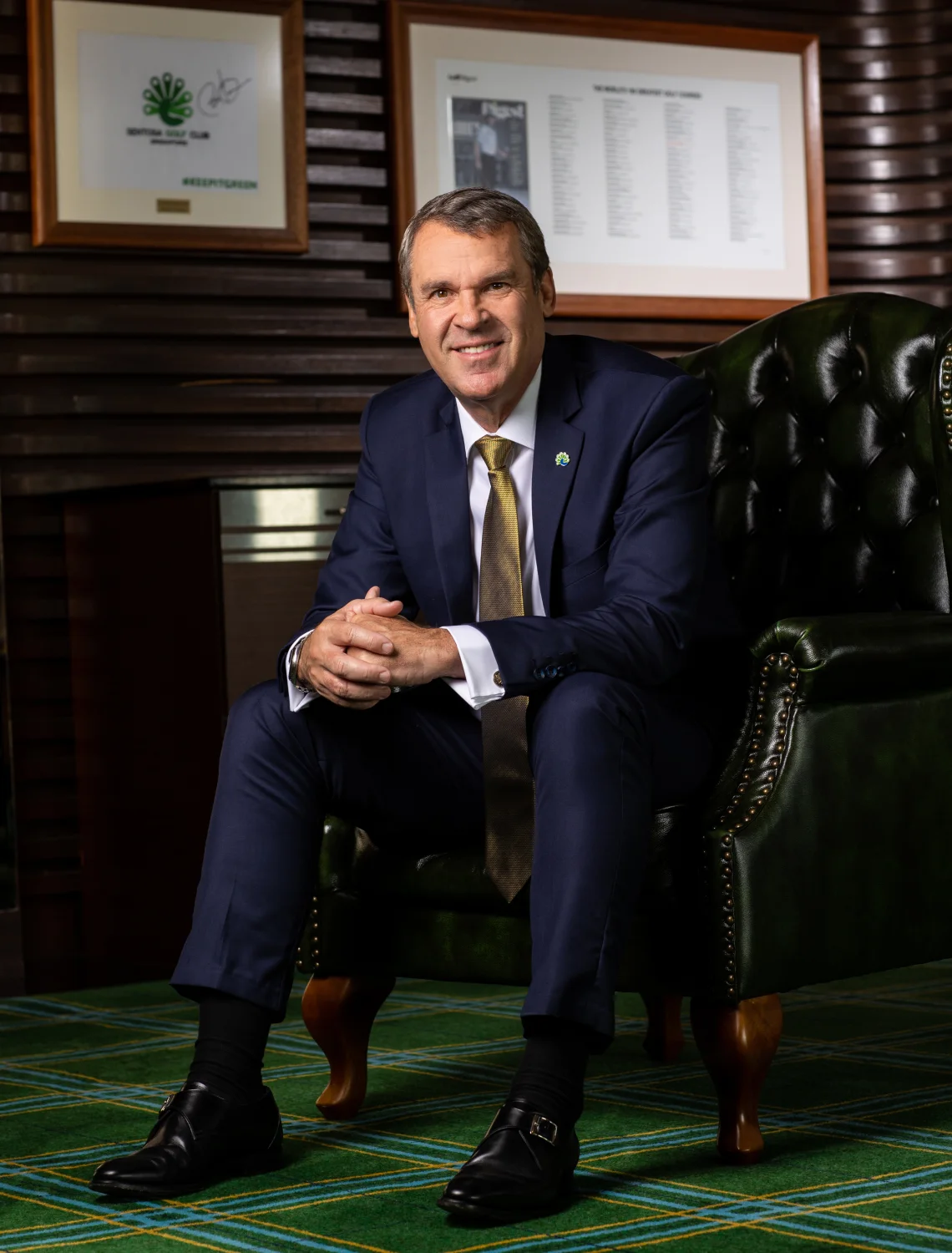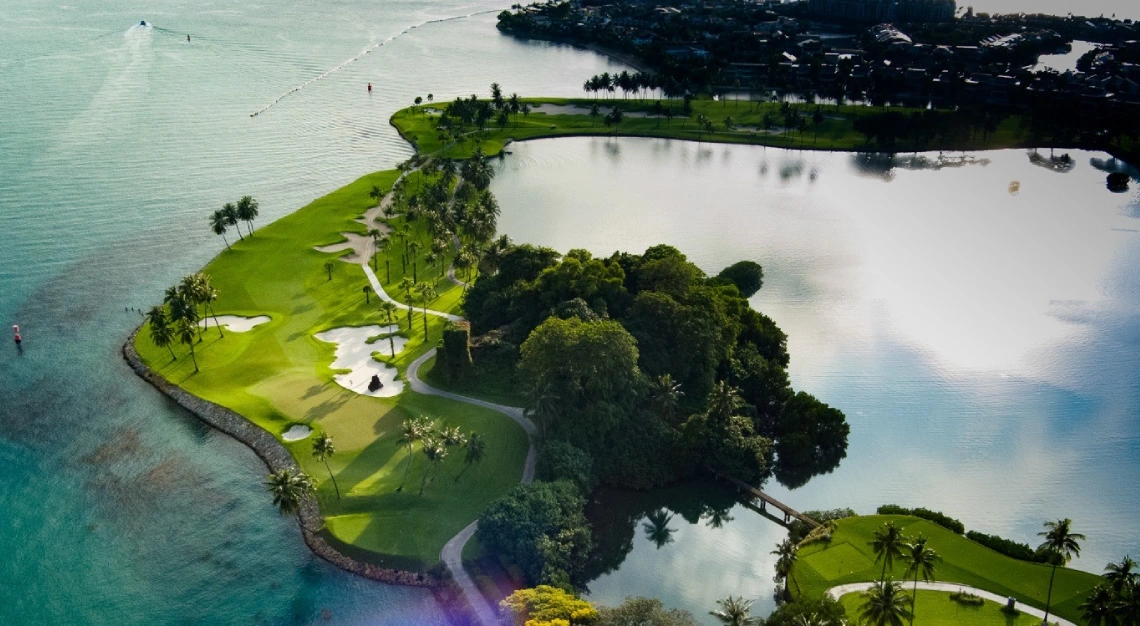General manager and director of agronomy at Sentosa Golf Club, Andrew Johnston, reflects on his tenure at one of Asia’s elite golfing destinations
A pillar in the realm of luxury golfing experiences, Andrew Johnston’s decade-long stewardship—and counting—at the illustrious Sentosa Golf Club has elevated the club to unparalleled heights.
Having joined the company in 2006 to reimagine the renowned Serapong course, Johnston’s visionary touch soon became apparent. By 2010, he had assumed the mantle of director of agronomy and, in 2013, his portfolio expanded to include the role of general manager. Johnston’s innovative spirit and dedication came to the fore in 2016, where he oversaw the redesign of the club’s new Tanjong course. The revamped course fused cutting-edge technological advancements with sustainable agronomic excellence, and has since been justifiably hailed by guests and professionals as one of the world’s finest golf courses.

Celebrating its 50th anniversary this year, Sentosa Golf Club’s cascade of accolades are a testament to Johnston and his team’s relentless pursuit of perfection, and a deep-rooted understanding of the intricacies of golf course architecture, agriculture and maintenance.
Beyond his commitments at Sentosa Golf Club, Johnston helms Johnston Design and Agronomy, a bespoke golf course design consultancy firm. His multifaceted expertise underscores his work behind the scenes in the world of elite golf, where luxury meets innovation on the greens of Sentosa Golf Club.

You’ve been named one of the ‘Most Innovative People in Golf’ by Golf Inc. in 2022. What drives you?
This recognition is both humbling and motivating; it signifies that we are on the right track, but also reminds me there is still much work to be done. What drives me is a profound commitment to creating a positive impact on the game and the environment. For me, golf, as a sport, has a unique relationship with nature. This connection inspires me to continually seek ways to harmonise the love for gold with our responsibility to the planet. My ultimate goal is to lead the industry toward a greener future.
Sentosa Golf Club has been recognised as one of the most sustainable golf clubs globally. Which of the club’s sustainability initiatives are you most proud of?
The robust culture we’ve cultivated has been the cornerstone of our success. This culture permeates every facet of the club, from daily operations to strategic planning. This ensures that our initiatives are not merely implemented but passionately embraced by staff, members, and partners alike.
Creating this culture required fostering open dialogue, empowering team ownership, and integrating sustainability into all decision-making processes. The result is a collective sense of pride and responsibility, with every action—from choosing suppliers to event planning—anchored in our commitment to sustainability. This holistic, culture-driven approach not only sustains our efforts but propels us toward new heights in environmental stewardship.
What are some of the most significant changes you’ve witnessed in the industry over the years with regards to environmental practices?
The use of Biochar is something we pioneered in Asia. Biochar is a carbonised organic material that stands out as a game-changer in agronomy, due to its multifaceted benefits in agriculture. It enhances soil fertility and structure, which gives rise to improved aeration and reduced water retention. At the same time, it retains carbon in a process called sequestration; this reduces CO2 levels in the atmosphere, mitigating climate change. Additionally, it is also capable of absorbing dangerous pollutants. Biochar just stands out as transformative technology with extremely versatile benefits all-round.
Sentosa Golf Club has hosted numerous high-profile events and tournaments. What was the most memorable event for you?
Undoubtedly, the most memorable event for me was the 2014 HSBC Women’s World Championship that was marked by Paula Creamer’s incredible 75-foot putt. That day held significant personal and professional meaning to me. It was the day Peter Downie, our former general manager, handed over the reins to me. While the leadership transition was an honour, it was also a tremendous challenge given the circumstances: we had been experiencing an unprecedented four-month drought, which saw our lakes running completely dry.
The much-needed rains arrived about 45 days later, but those weeks were a true test of our resilience and resourcefulness. To balance pressures of environmental challenges with demands of hosting a world-class tournament, now that was a memorable period in our modern history.

The Serapong and Tanjong courses are world-class. How challenging is it to maintain these courses, particularly in Singapore’s tropical climate?
Singapore’s climate–high humidity, intense rainfall, and consistently warm temperature–presents significant challenges that are both complex and demanding. One of the primary challenges is managing rainfall; excessive moisture leads to water logging, which is detrimental to the turf’s root health. To combat this, an efficient drainage system is crucial.
Another major challenge is the perpetual threat of turf grass diseases. The warm climate promotes the proliferation of fungi, bacteria and pathogens that quickly damages large areas of the course. Regular monitoring and a proactive approach to disease management is essential in keeping the turf in top playable condition.
Looking back, what do you consider the most significant achievements of the club during your tenure?
‘TR365’. That refers to our dedication to be in Tournament Ready Conditioning, 365 days a year. This is one of the most progressive initiatives that I believe propelled us into another class. The commitment and effort it takes to keep green speeds at an average of 10, and maintain tees at the same mowing heights as the greens for over a decade, it is immensely remarkable.
What advice would you give to other golf clubs around the world looking to enhance their sustainability practices?
Measure your carbon footprint. This initial step serves as the very cornerstone for informed decision-making; it lays the groundwork for devising a robust sustainability strategy. Once you understand your environmental impact, you’ll be able to identify and prioritise initiatives that best align with your club’s values and goals. From thereon, the club can then embark on developing a holistic master plan that integrates innovative solutions and practices to not just reduce the club’s carbon footprint, but also enhance overall environmental, social and economic sustainability.






